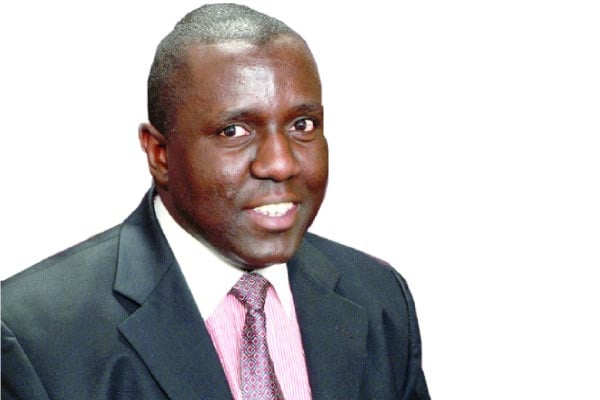Prime
Advances in cancer treatment offer hope

Author: Karoli Ssemogerere. PHOTO/FILE
What you need to know:
- Most patients walk through the doors, sometimes unaided. Many others die at other hospitals, sometimes even without a diagnosis.
At the weekend, we were at a funeral of a relative who succumbed to cancer at age 80. In early 2021, Peter was diagnosed with Stage IV Cancer of the pancreas.
It’s a cancer that normally kills patients within weeks of diagnosis, as it’s difficult to treat and has often spread before the primary site is located.
Once, a few years ago, a former workmate, with whom we shared all sorts of youthful banter, and lived in the same livelihood was out of sight for just four weeks. When we met, she told me in those four weeks, her mother had been diagnosed, admitted, and died of pancreatic cancer at the Uganda Cancer Institute.
Then a young doctor, Dr Francis Miiro, a year ahead of me at St Mary’s College Kisubi, in his prime, working in France met the same fate, also several years ago.
I was pleasantly surprised that Peter had been able to battle cancer for more than two years in the care of the oncologists at the University of Florida-Shands. Secondly, he had volunteered for a trial that included another patient from Uganda, who also died a few months earlier than he did.
In my bereavement last year, the most noteworthy messages of condolence came from many people who had lost relatives to cancer, stating what we had gone through in four weeks, from diagnosis to demise, they had gone through over a much longer period.
When facing the doctors at Uganda Cancer Institute to discuss the patient, five to seven years is presented as a success story. One story goes, “if it is multiple myeloma”, the patient can even go back to work. We have a bus driver back to his daytime job. There was a former top executive at the Uganda Wildlife Authority who went to work during the day and entered palliative care at night.
There is also the difficult question of why patients continue to be air-lifted to foreign countries for treatment, especially when the odds are even worse.
At the funeral of Ms Alice Wafula Oguttu, one of the specific facts was mentioned, the absence of a PET scan at the Uganda Cancer Institute. The PET (“Positron Emission Tomography”) scan is able to pinpoint with a 99 percent degree of accuracy the primary site of cancer where other methods can’t. Nairobi has two PET scans, one in the public, and another in the private sector.
A PET scan doesn’t come cheap, it’s the high end of diagnostic medicine costing $1.7 million to $2.5 million (about Shs6.2 billion to Shs9.1 billion).
However, some patients are often too sick to fly, and aviation alone can become an unmitigated disaster. In Uganda, we use some forms of nuclear medicine, CAT scans, and blood tests. In our case, the haematologist, Dr Susan Nabadda.
Hematologists are a sub-specialty in pathology and Dr Nabadda could not commit herself to a diagnosis because her tools were limited.
Often in times of life and death, this can also be part of the excruciating experience patients and their families feel in Uganda. The oncologists and oncology radiologists are good, but they are missing critical equipment. The on-care attention to patients is also good, even though post-operative care is difficult in many hospitals which are using outdated devices. There is also the run for supplies; it’s typical for the caregivers to run around looking for blood, and consumables; a legacy problem of the magendo days of the years past. The same government apparatus, National Drugs Authority, and National Medical Stores that support private providers are the same ones in charge of the public facilities.
Many trips abroad could be avoided if a culture of free exchange of information was established. One certainty that comes from this business is the confidence interval, doctors build from years of experience. Even when they are not sure, they will tell you the probability of your chances, and it comes through grim statistics.
According to the Budget Monitoring and Accountability unit of Finance Ministry 2015 briefing paper, 1,400 deaths were recorded in FY 2013/2014 at Uganda Cancer Institute, translating to nearly four deaths daily. Most patients walk through the doors, sometimes unaided. Many others die at other hospitals, sometimes even without a diagnosis.
In a small way, I felt, as we laid our Peter in the grave, that the odds of pancreatic cancer had improved in a significant way, even though it ended the same way.
Mr Ssemogerere is an Attorney-At-Law and an Advocate. [email protected]


